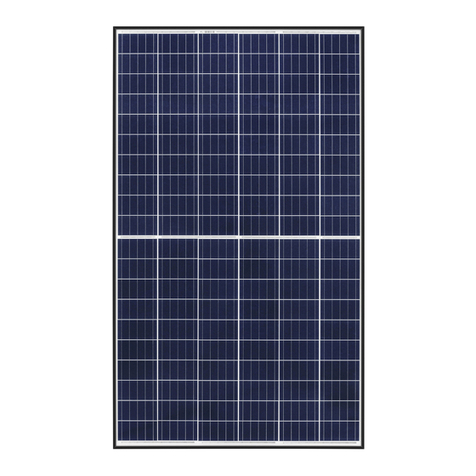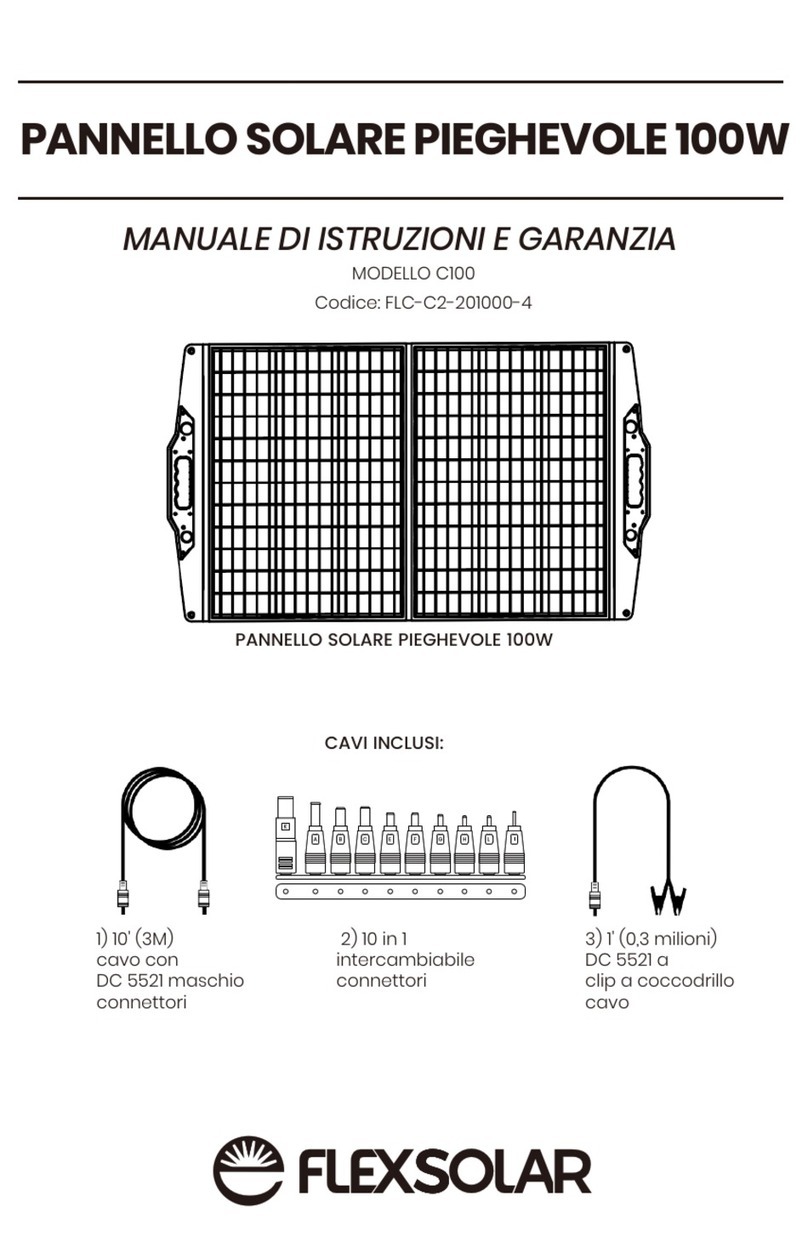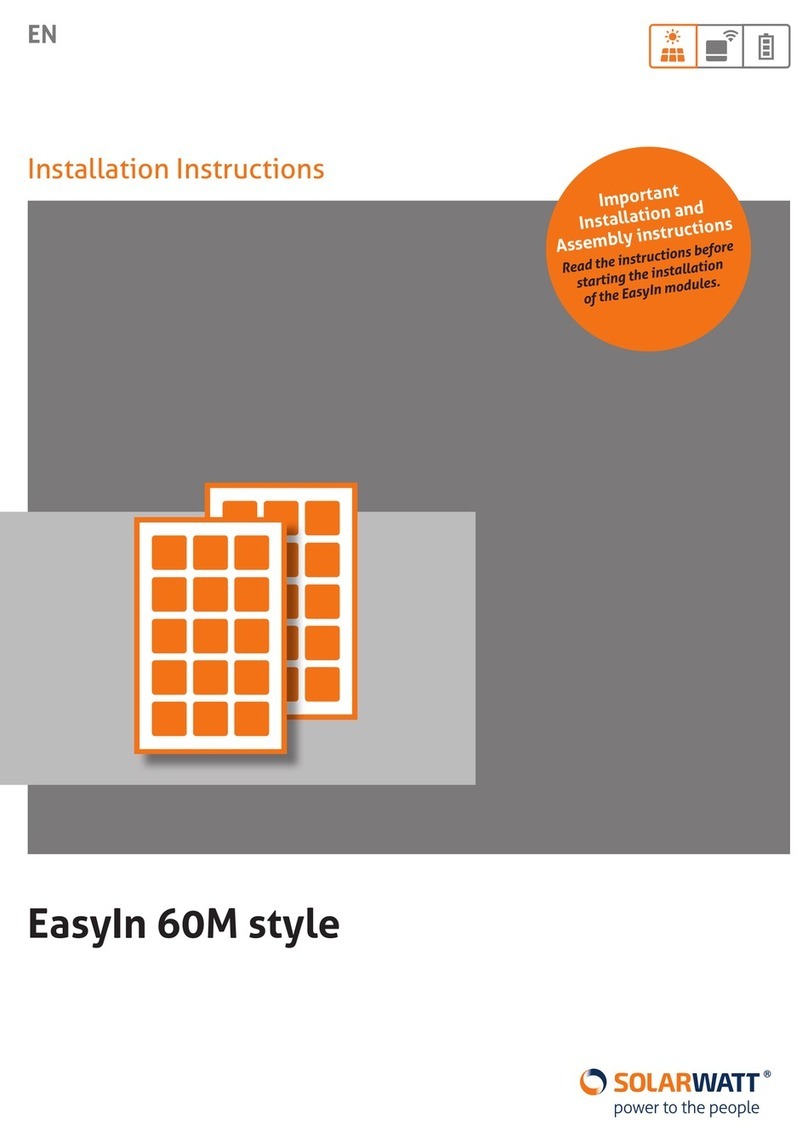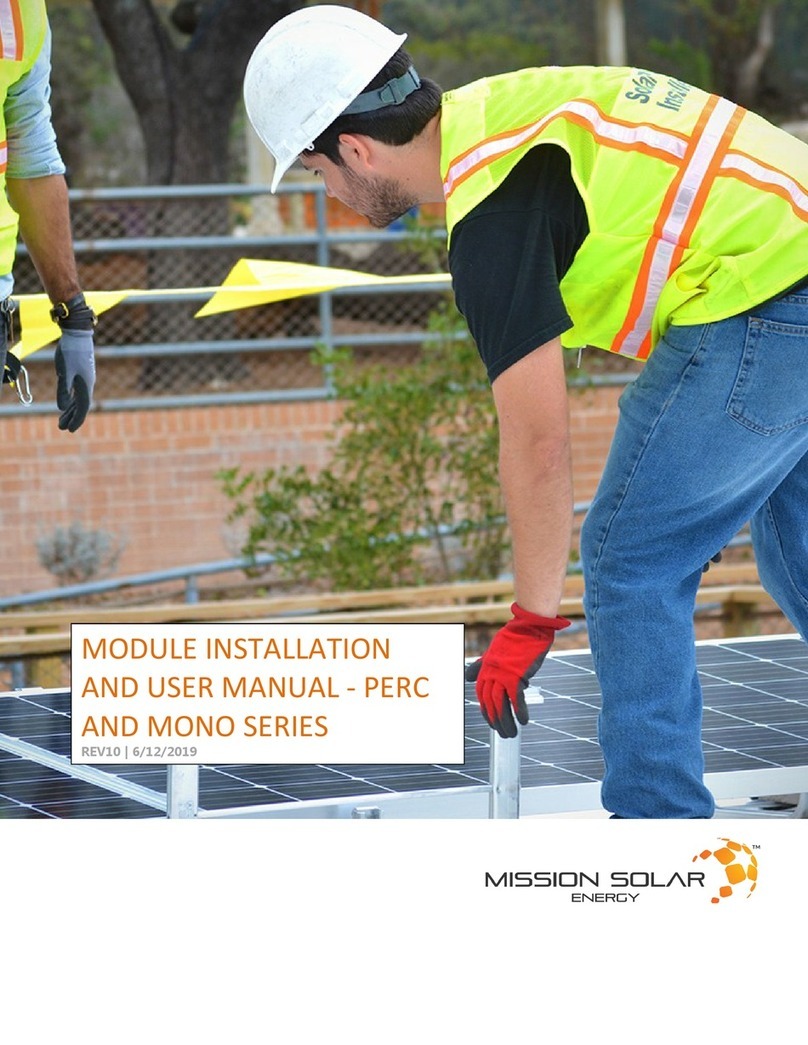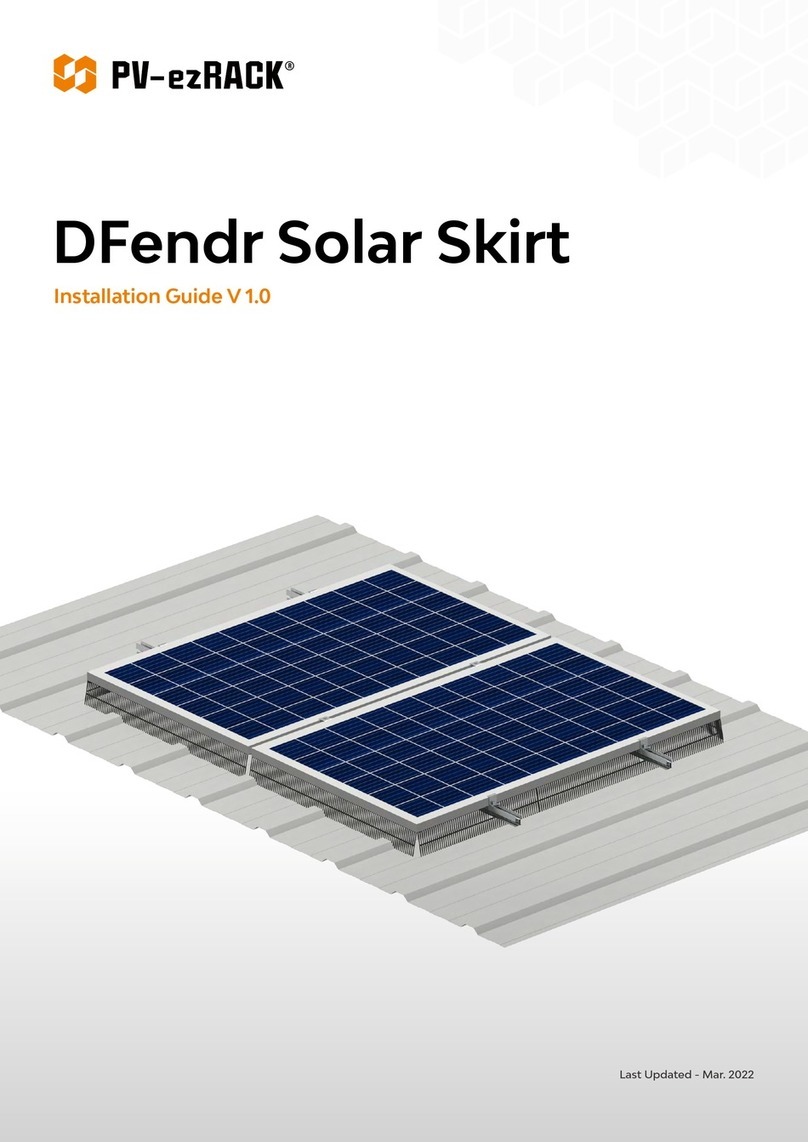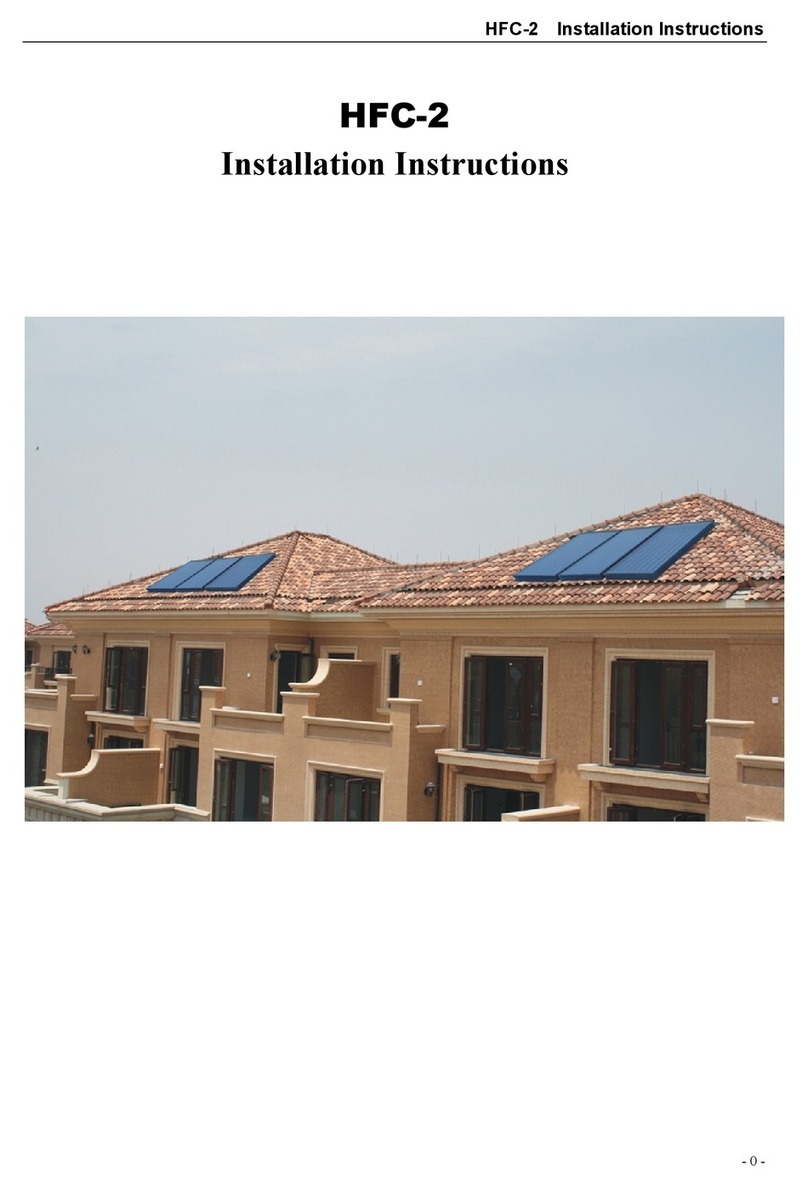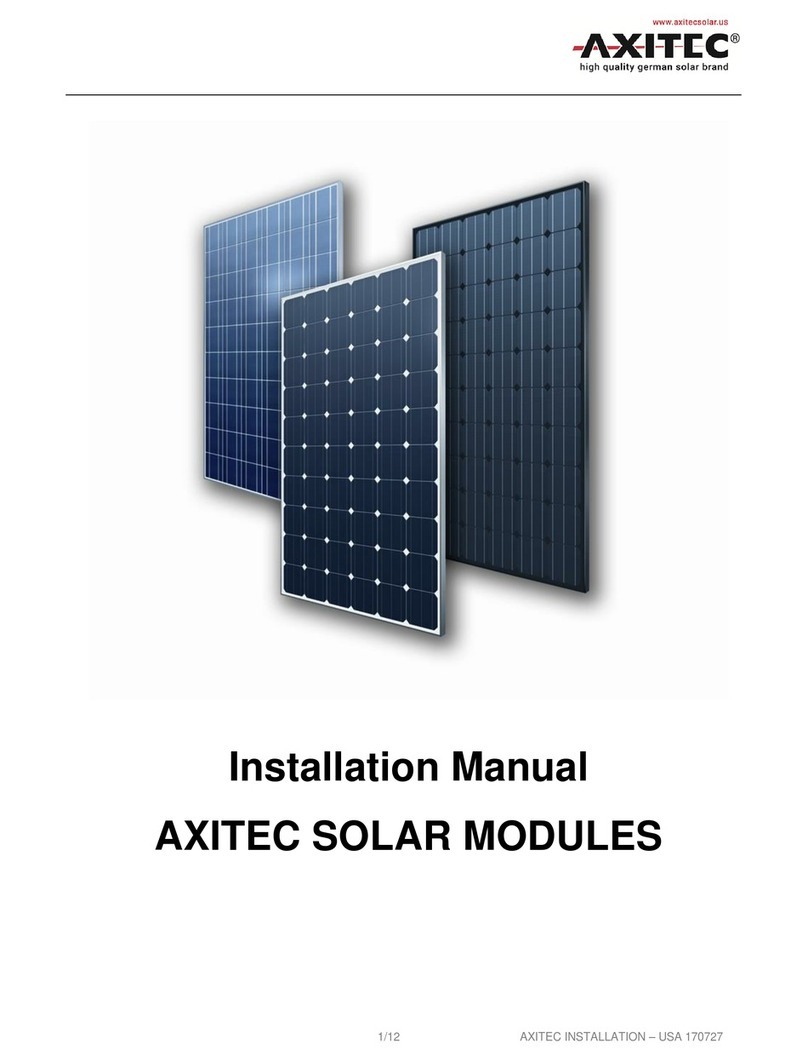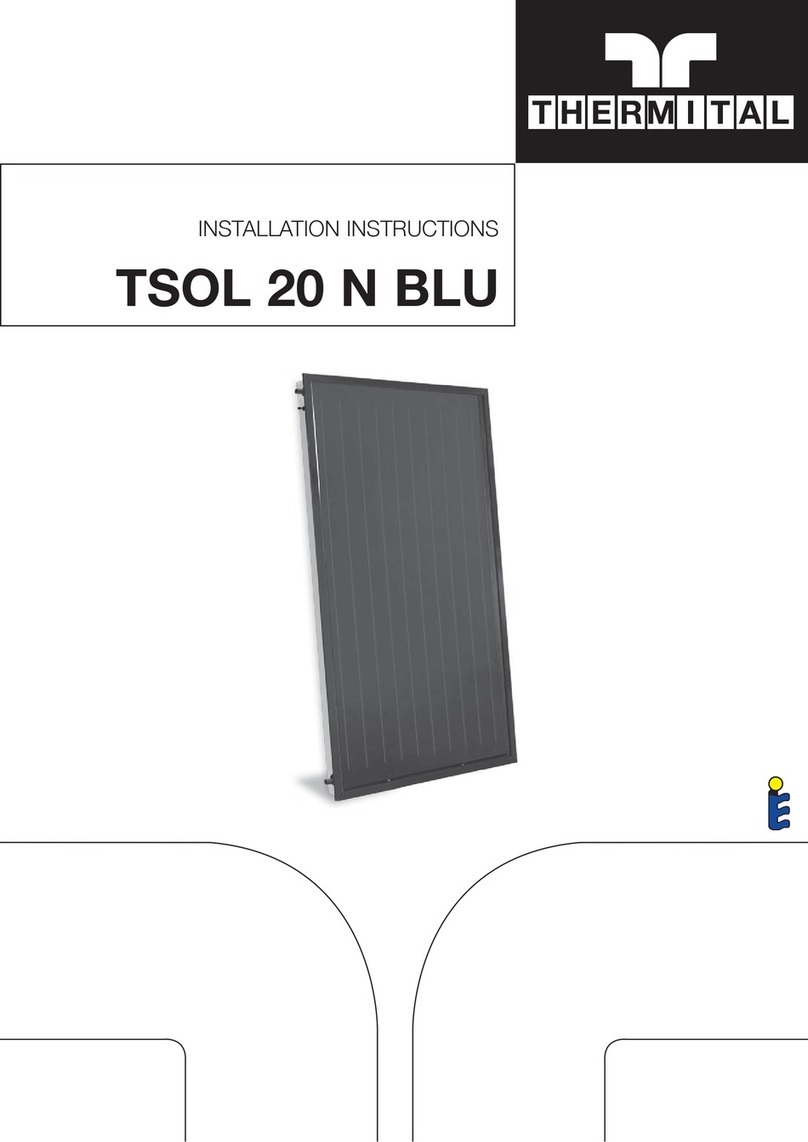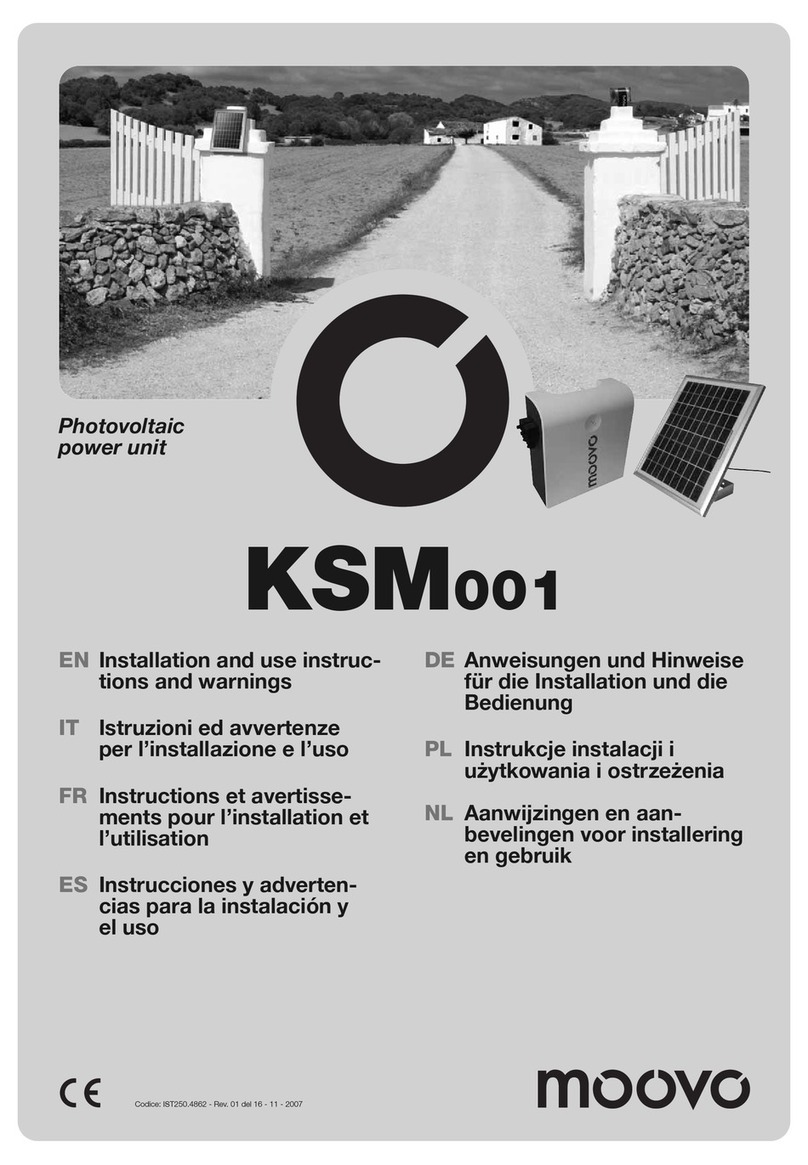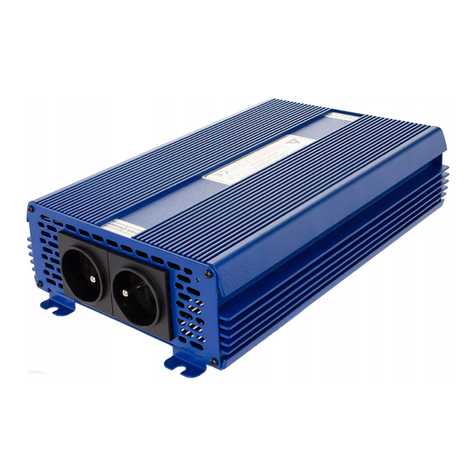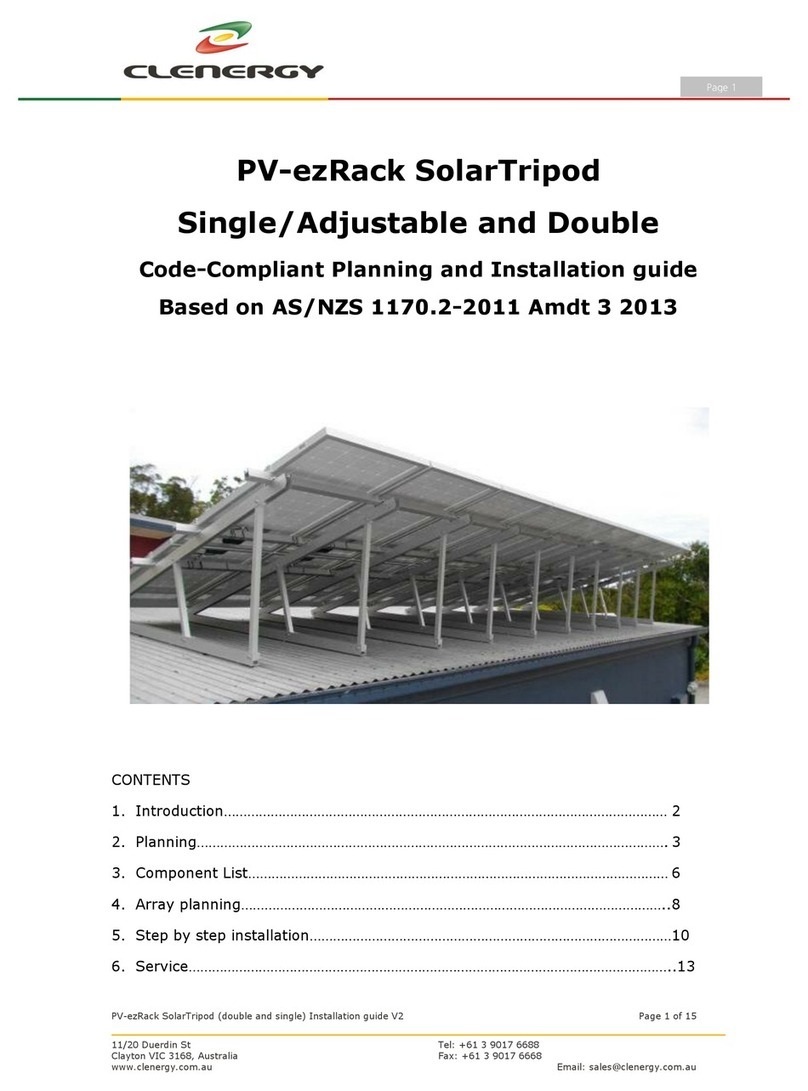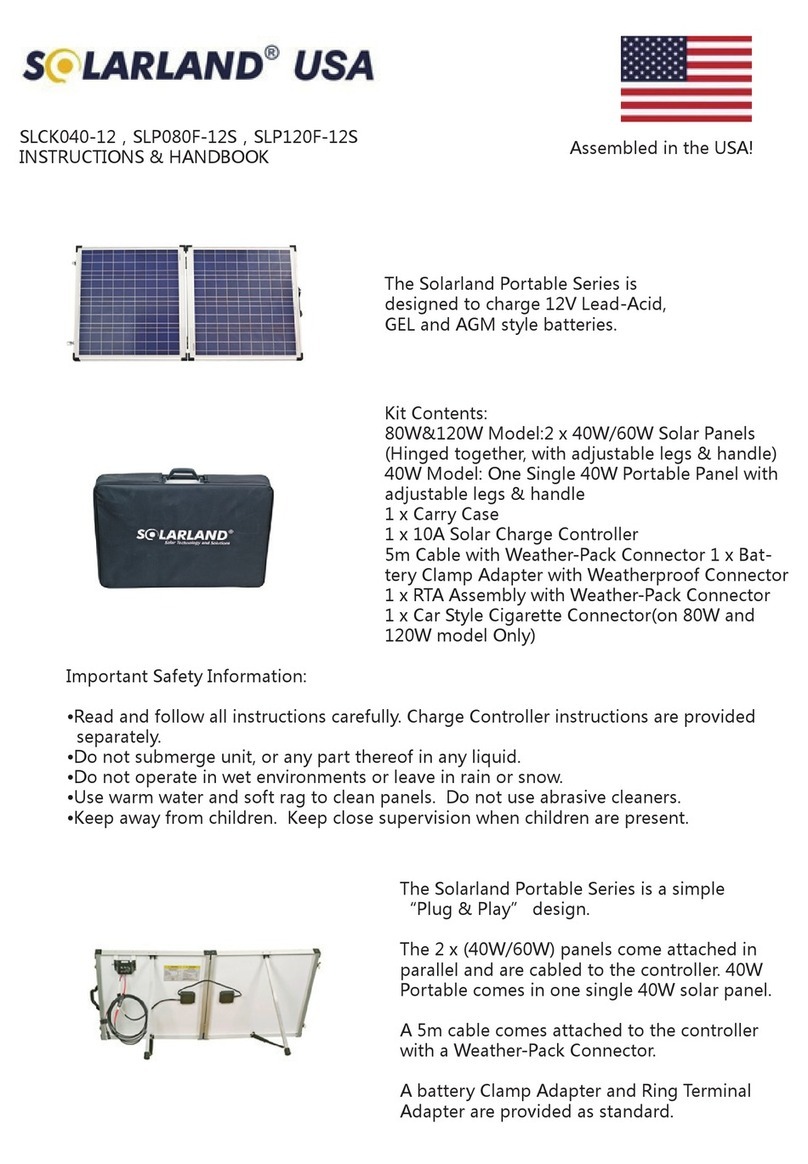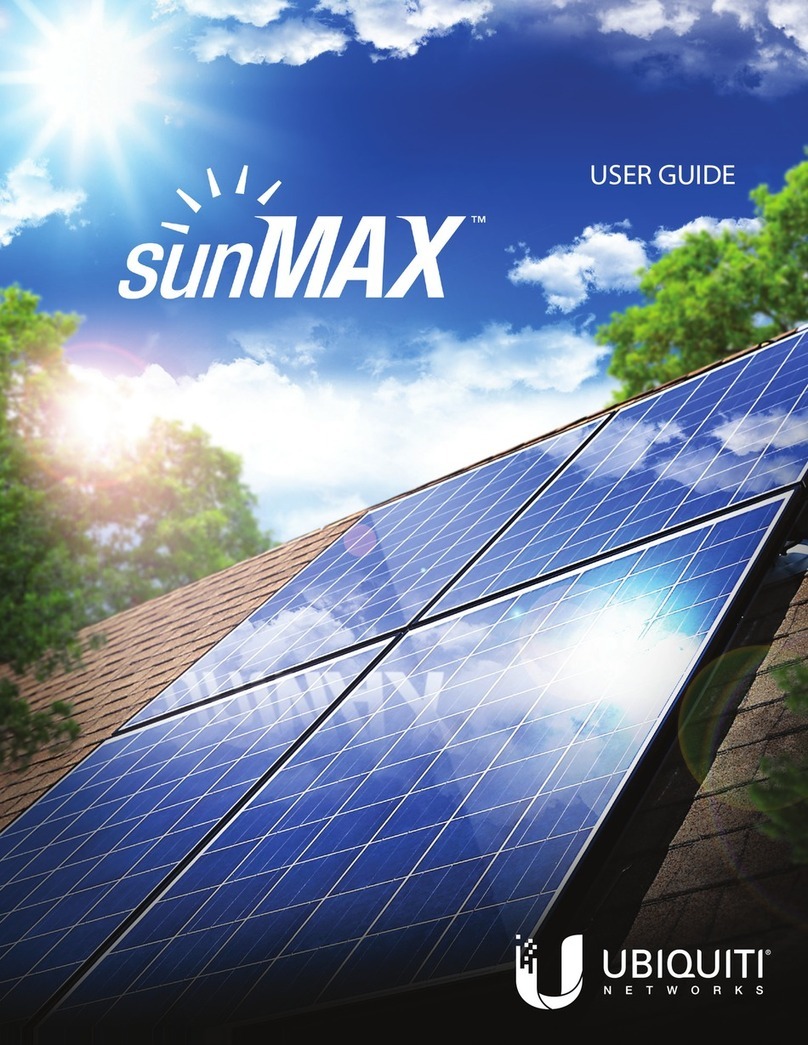
Innovation Changes The World
2019.01 E/0 www.sunportpower.com
other completely opaque material, or flipping Modules, and
placing the front side of Modules onto a smooth, flat surface.
In order to avoid arcs and electrical shock, please do not
disconnect electrical connections under load. Faulty
connections can also result in arcs and electrical shock. So
please keep connectors dry and clean, and ensure that they are
in proper working condition. Never insert any other metal
objects into the connector, or modify them in any way in order
to secure an electrical connection.
Do not touch or handle modules with broken glass, separated
frames or damaged back sheet unless the modules are
disconnected in advance and you are wearing proper PPE.
Avoid handling modules when they are wet unless cleaning
the modules as directed in this manual. Never touch electrical
connections that are wet, without PPE or insulated gloves.
Reflection from snow or water can increase sunlight and
therefore increase current and power. In addition, low
environmental temperature can also substantially increase
voltage and power.
4.4 Fire safety
Consult your local authority
for laws and codes; follow
requirements for building or
structural fire safety. Sunport’s
modules have been listed as
Class C according to IEC
61730-2 standard. Use
appropriate components such as fuses, circuit breakers,
grounding connectors, and so on as regulated by local
authority.
Roof constructions and installations may affect the fire safety
of building, it has to be covered by fire-proof material with
appropriate class, and make sure there is adequate ventilation
between back sheet and installation side. In order to maintain
the fire class rating, the distance between the modules frame
surface and the roof surface shall be at least 100mm; modules
are electrical generating devices that may affect the fire safety
of a building.
Electric arc may happen when module working due to the
wrong installation method or defective module part. Please
keep the combustible liquid, gas and dangerous cargo away
from the module. You must stop using the module if there is
exposed combustible gas nearby.
In the event of a fire, modules may continue to produce a
dangerous DC voltage, even if they have been disconnected
from the inverter, have been partly or entirely destroyed, or
the system wiring has been compromised or destroyed. In the
event of fire, inform the fire crew about the particular hazards
from the PV system, and stay away from the PV system
during and after a fire until the necessary steps have been
taken to make the PV system safe.
5.INSTALLATION
5.1 Installation condition
Sunport’s modules must be mounted on buildings or other
structures suitable for modules installation (e.g. ground.
rooftop). Modules must not be mounted on moving vehicles
of any kind; Modules can be installed in seaside with a
distance of 50m to 500m from sea. Corrosion may happen to
joints between frame and supporter, or and grounding; Must
use stainless steel or aluminum metal to directly contact
modules in seaside and do antiseptic treatment on joints to
prevent corrosion; Modules must not be installed, nor
operated in area with strong corrosive matter, such as salt, salt
mist, salt-water, active chemical vapors, acid rain, any other
type of corrosive matter. In addition, Modules must not be sit
in locations where hail, snow, sand, smoke, air pollution, soot,
etc. are excessive, this could affect the safety and/or
performance of the modules.
The recommended ambient temperature should be within –
40°C to 40°C . Do not apply mirrored, magnifiers or other
concentrate light onto the modules.
Sunport recommends installing the modules with a tilt angle
of at least 10 degrees, making it easier for dust to be washed
off by rain and reduce the time of cleaning; In addition, this
will help to drain the water out directly from the surface,
avoid watermarks from trapping water on the glass surface
and affect the appearance and performance of modules.
Partial or complete shading of a module or modules can
significantly reduce system performance. Sunport
recommends installing modules in the place without shade
throughout the year to increase the amount of energy
produced by the modules; Lightning protection is
recommended for PV systems that are to be installed in
locations with high probability of lightning strikes.
